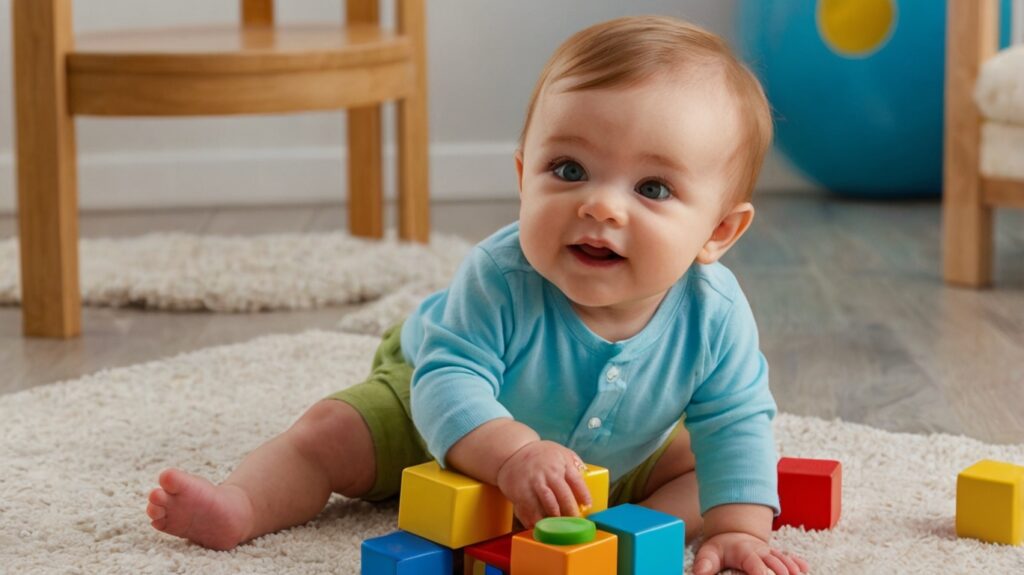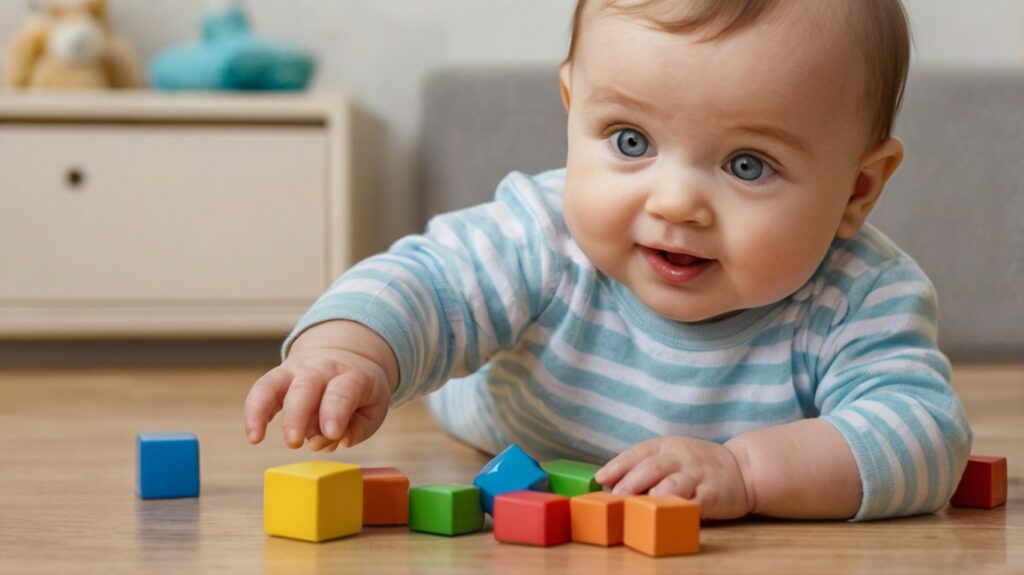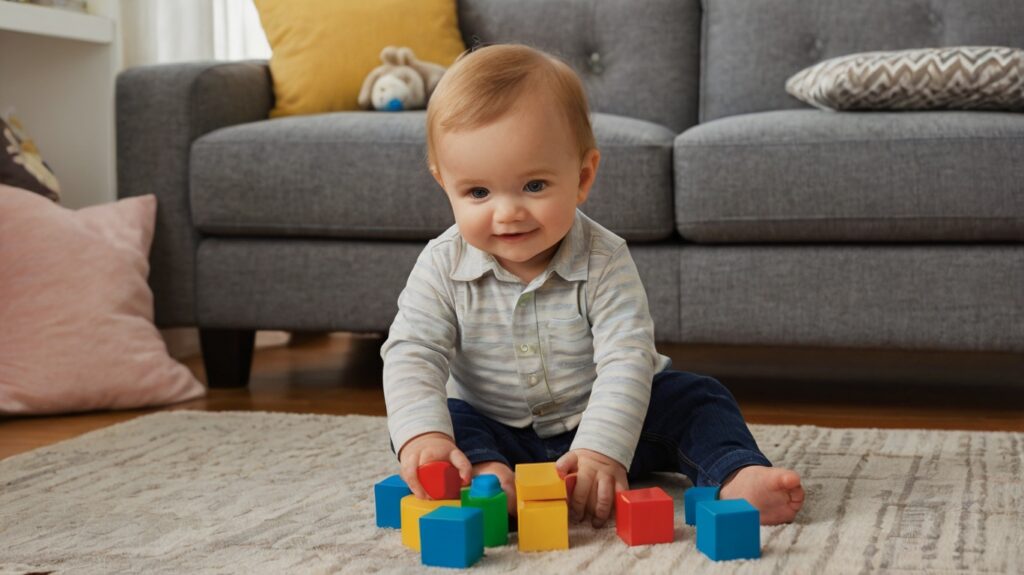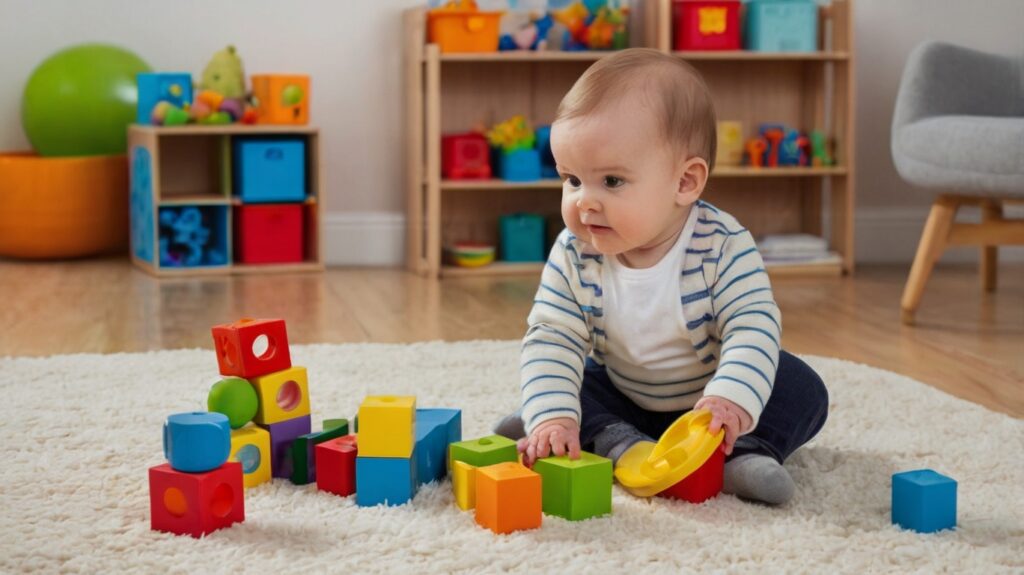
At 10 months old, your baby is becoming more adventurous, mobile, and interactive. This stage is all about curiosity, exploration, and building independence. You’ll notice big leaps in physical skills, communication, and personality.
Physical Development
- Mobility – Many 10-month-olds crawl quickly, scoot, or creep on hands and knees. Some may pull up to stand and cruise along furniture. A few may even attempt their first steps.
- Fine motor skills – The pincer grasp (using thumb and forefinger) is more precise, allowing your baby to pick up small snacks, point, or turn pages in board books.
- Hand coordination – Babies enjoy clapping, banging toys together, or stacking soft blocks.

Cognitive Development
- Object permanence – They understand that objects and people still exist even when out of sight, which is why peekaboo is a favorite game.
- Problem-solving – Your baby may experiment with pushing or pulling things, opening drawers, or figuring out how to reach a toy.
- Memory – They remember routines and may anticipate what happens next (like getting excited when you prepare a bottle).
Social and Emotional Development
- Separation anxiety – Your baby may still cry when you leave but usually calms down when distracted.
- Stranger wariness – Shyness around unfamiliar people is common.
- Emotional expression – Laughing, babbling, squealing, and showing frustration are all signs of growing personality.

Feeding at 10 Months
- Breast milk or formula – Still the main nutrition source (about 20–30 ounces daily).
- Solid foods – Your baby likely eats 3 meals and 1–2 snacks a day.
- Finger foods – Encourage self-feeding with soft pieces of fruits, vegetables, small pasta, or shredded chicken.
- Cup practice – Introduce a sippy or straw cup with water.
- Allergens – Continue offering allergenic foods (peanuts, eggs, dairy, fish) if tolerated.
Sleep Patterns
- Night sleep – About 10–12 hours per night, though teething or developmental changes may cause occasional wake-ups.
- Naps – Typically 2 naps per day, lasting 1–2 hours each.
- Bedtime routine – Consistency helps babies settle and feel secure.
Communication and Language
- Babbling – Sounds like “mama,” “dada,” and other repeated syllables may now have meaning.
- Gestures – Your baby may wave, point, shake their head, or lift arms to be picked up.
- Understanding words – They may recognize “bye-bye,” “no,” and familiar names.

Safety Tips
- Baby-proofing is essential—cover outlets, secure furniture, and install gates at stairs.
- Keep small objects, cords, and choking hazards out of reach.
- Never leave your baby unattended on furniture or near water.
When to Call the Pediatrician
Every baby grows at their own pace, but mention concerns if your 10-month-old:
- Isn’t showing interest in crawling or moving.
- Doesn’t sit steadily without support.
- Doesn’t respond to their name or familiar voices.
- Hasn’t started using gestures or babbling.
Your 10-month-old is turning into a curious little explorer, eager to move, play, and communicate. This is a joyful stage where their personality shines, and your encouragement helps them build confidence and new skills every day.